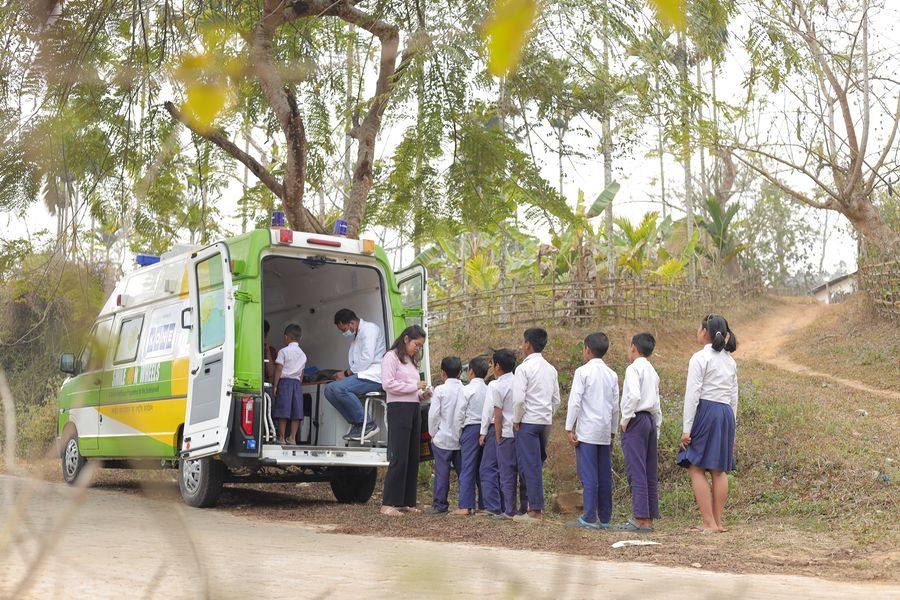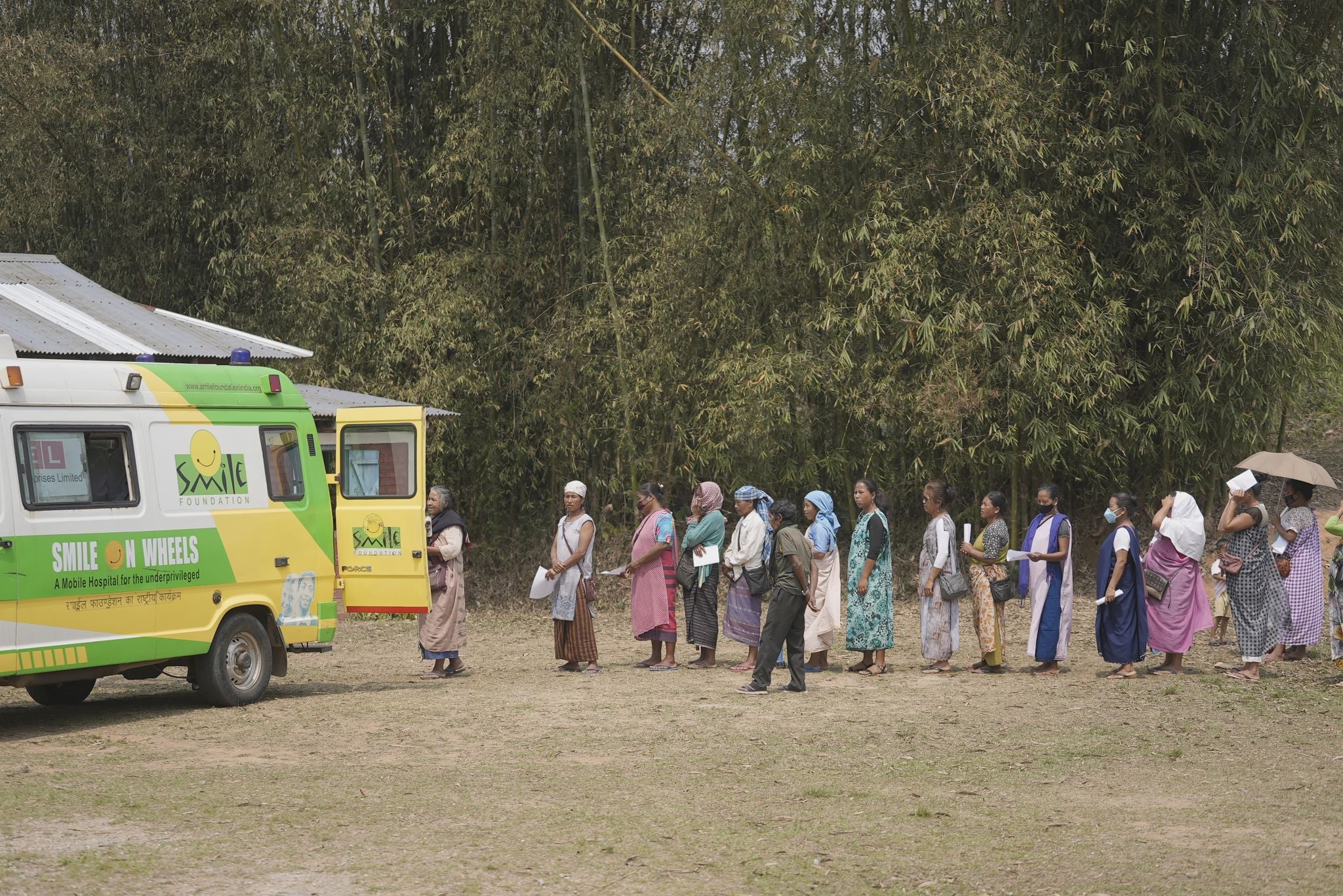Non-communicable diseases (NCDs) are on the rise in India, posing a significant public health challenge. The incidence of NCDs among children aged 5-17 has more than doubled over the past decade, even though this age group was historically less affected. According to leading hospitals in India, NCDs are projected to cause a staggering $4.8 billion economic loss by 2030. To address this concerning trend, a shift towards preventative interventions is essential.
NCDs, including cardiovascular diseases, cancers, chronic respiratory diseases and diabetes, affect various socio-economic groups and regions in India differently. Urban areas battle with the consequences of fast food, sedentary lifestyles and inadequate meal preparation time, leading to an uptick in conditions like hypertension and diabetes. Conversely, rural areas face challenges related to access to nutritious diets and cultural practices that may discourage dietary diversity and balance.
National Health Policy for Preventing the rise of NCDs in India
Recognising the urgency of the situation, the Indian government launched the National Health Policy in 2017, emphasising the prevention and control of NCDs. While the policy includes measures to promote healthy lifestyles and enhance access to quality healthcare services, prevention efforts have taken a back seat to screening and treatment initiatives. The focus of the primary health system remains on screening individuals for diabetes and hypertension, emphasising the need for a more holistic approach that prioritises prevention.
Preventative interventions must be taken directly to communities, including schools, homes and workplaces, to ensure early detection and intervention. Awareness campaigns targeting urban women, who are particularly vulnerable to diabetes, can promote healthy dietary choices and lifestyle habits. Collaborating with influencers and leveraging social media platforms can amplify the reach and impact of such initiatives, making healthy living aspirational and accessible.
Early intervention is crucial, as many NCDs have their roots in childhood and adolescence. School-based programmes aimed at adolescents can instill lifelong healthy habits, emphasising the importance of physical activity and balanced diets. By involving teachers and peer leaders, these programmes can effectively disseminate information and facilitate behavior change among students.
How do Nonprofits have the edge in curbing NCDs?
Launching a cooking class to promote nutrition in isolated areas, arranging housing for refugees or providing critical medical care to earthquake survivors — nonprofits working the healthcare domain, provide a myriad of invaluable services to communities around the globe. These organisations are essential to the fulfillment of core public health goals and play a key role in improving access to health services in underserved geographic locations. For instance, they may raise money to open a community health clinic when government funds are inadequate or conduct studies to identify preventable health disparities in certain neighbourhoods. Nonprofits also provide specialised services for communities coping with the effects of natural disasters, disease outbreaks or extreme poverty.
By providing these services — and many others — nonprofits have become an essential part of public health.
Nonprofits conduct a range of educational programmes on how to avoid or change unhealthy behaviours and teach healthy behaviours, such as eating nutritious foods and getting plenty of exercise.
Adopting healthier behaviours helps reduce instances of common chronic diseases such as diabetes, heart disease and obesity, which take a huge toll on the Indian population and contribute to skyrocketing health expenditures. Nonprofits form strong relationships with community members, including local authorities, schools and healthcare providers respecting and understanding the needs of the local citizens to help motivate them toward change.
Leveraging Networks and Partnerships
Collaboration among stakeholders is paramount to addressing the NCD crisis at scale. Nonprofits can leverage existing networks and partnerships to share resources and expertise, ensuring the effective implementation of prevention programmes. For example, adapting successful urban-focused initiatives for rural populations requires collaboration with organisations like ours, whose one of the specialisations lie in health equity.
Government convergences and collaborations are also essential in the fight against NCDs. Development organisations undertake various convergences with government initiatives to make the prevalence of NCDs less impactful. These collaborations often involve sharing resources, coordinating efforts and aligning strategies to maximise impact. By working together, government agencies and development organisations can create synergy and tackle the root causes of NCDs more effectively.
Technology-driven Interventions
Public health organisations engaged in biostatistics use data to evaluate and address health risks. This field is increasingly important in the healthcare arena as the amount of patient data continues to grow and health organisations need someone to analsze the data for actionable insights.
Biostatistic-focused nonprofits often provide statistical analyses that form the basis of public health intervention plans. For instance, biostatistics are often used in epidemiological studies looking to determine disease causes and distribution patterns, which then inform what interventions should take place. A biostatistical study might look at infection rates before and after a specific date to determine the effectiveness of an awareness programme in a certain region. Data analysis can also look at disease survival data to determine best practices in medical care. For instance, it can determine what cancer drugs give the greatest chance of post-remission survival.
Technology plays a pivotal role in scaling up prevention efforts and facilitating behaviour change. Text and voice-message-based programmes can deliver targeted health messages to millions of individuals, promoting healthy behaviours and encouraging lifestyle modifications. These tech-driven interventions are particularly effective in reaching isolated communities and underserved populations.
Nonprofits leading the way with NCDs
Nonprofits in India play a crucial role in addressing the challenge of the rise in NCDs. With their expertise and grassroots connections, nonprofits are well-positioned to implement preventative interventions and drive community-level change. By partnering with government agencies, healthcare providers and other stakeholders, nonprofits can leverage their collective strengths to combat the the crisis of NCDs effectively.
In conclusion, nonprofits, government agencies and other stakeholders must work together to curb the rise of NCDs in India. By implementing preventative interventions, raising awareness and leveraging technology like Smile Foundation does with its healthcare programme, we can create a healthier future for all. Together, we can make a meaningful difference in the lives of millions and ensure that NCDs no longer pose a significant threat to public health and well-being.









